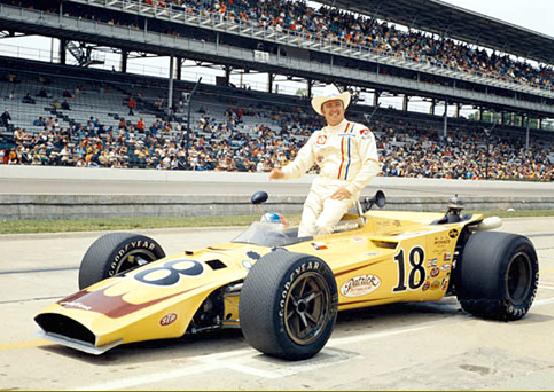

|
Teammate Johnny Rutherford's Eagle. Note the nose spoiler and high downforce wedge-shaped bodywork at the rear. |
|
In his own words: My Indy Eagle was a 1967 model heavily modified to make it suitable for twice the 500 horsepower for which it was designed. Pat Patrick is standing behind me in a red jacket in this photo taken just before my qualifying run. I drove for Michner/Patrick Petroleum, and was hired by Michner as second car to Johnny Rutherford. Rutherford's Eagle was pretty much the same as mine, however he had some downforce from a powerful nose spoiler and wedge-shaped rear bodywork ending in an upswept tail. My car had no downforce at all, quite a handful with a Turbo-Offy. |
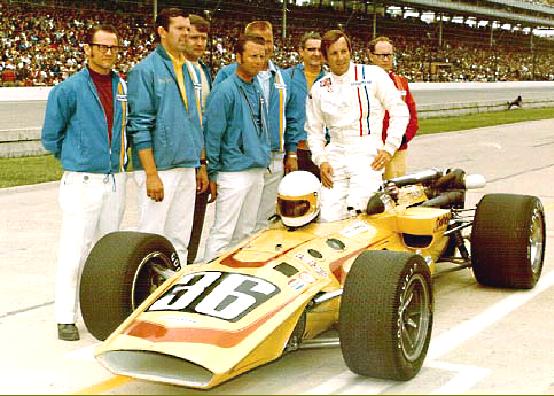
|
My crew chief at Indy, Le Roy Newmeyer is the fellow with the blonde crew cut standing next to me. He'd previously worked for A. J. Foyt. |
|
I did around 140 -145 coming off the turns, fish tailing all the way thru the short chutes twice each lap. Johnny did around 150 maybe 155 with a lot of security in the turns. I was faster down the straights, 225 maybe, but could not go thru the turns like his car shown below. Since you spend 2/3 of your time cornering, our lap times were surprisingly close. |
|
As it turned out, my teammate Johnny qualified at 170 in the front row, while I had run 168 in practice on qualifying morning. To put that in perspective, Dan Gurney qualified his brand new Eagle in the fourth row at 166. The next fastest beginner after me was Rick Meuther at 165. So it looked as if I might become Rookie of the Year. |
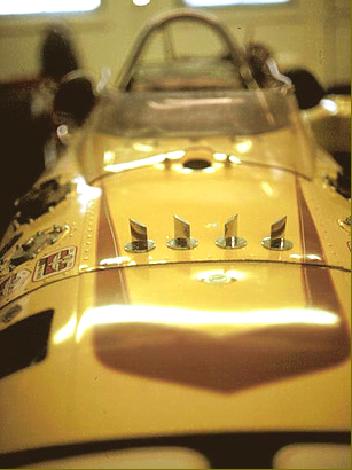
|
Vortex Generators to reduce cockpit turbulence |
|
Vortex Generators were used to redirect the air flow around the cockpit. It seems the airflow was buffeting my helmet down the straight away so badly that I could not read the pit boards. I wanted larger numbers on it, Johnnie Rutherford could see my boards with no problem. I immediately went over to the infield medical facilities and had my eyes re-checked. The doctor indicated that my eyes were among the best he had ever tested at Indy. Frustrated, I then worked on the job of redirecting the air. I tried fences at the top edges of the screen along the sides to keep air from buffeting my helmet. That helped, however I went to a speed shop and picked up some vortex generators and started placing them at the leading edge of the windscreen. That did the job, Hooray!, I could read the pit boards. Apparently Johnnie's air around his car was different than mine because he didn't need them. Maybe it was because I sat a little higher in the cockpit. |
|
Sidebar from the webmaster, Gary Wheeler: It's time to tell a Bobby Unser story: Bobby drove our works AAR Eagle after Gurney retired at the end of this season. Before USAC allowed the use of wings, Bobby would often ask John Miller, our engine man, to turn the turbo boost down because his car wasn't manageable with max power. Our best turbo-Offy engine had 1,150 horsepower at maximum boost. "Turbo lag" works both ways. What few people realize, is that when the driver lifts off the throttle, the engine will briefly continue to produce about 500 horsepower. The car has so much drag, that at top speed it instantly slows. But if the driver has applied full throttle while exiting a corner, and needs to back off for an instant, that residual 500 horses can light the rear tires like a dragster. It only takes a moment... |
|
At that point, according to Bobby Unser, the car wants to "spin like the knob on a shithouse door". The truth is: too much power was nearly unmanageable in those days of inadequate aero downforce. As you can see, Tony's #36 Eagle had no downforce at all! I was an Eagle designer at the time, and keenly remember it was crash, crash, crash until USAC permitted wings the next year. You're probably thinking that Tony wrecked the Eagle, but the truth is, he didn't have a bit of trouble with it because his crew had so carefully groomed him to build speed gradually. But Indy is a cruel place. |
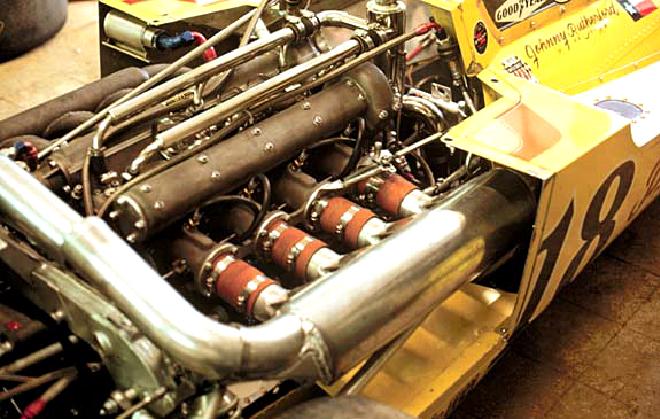
|
Turbo Offy installation in Rutherford's Eagle - teammate to Tony Adamowicz |
|
Indy-500, May, 1970 |
|
For his rookie year, Tony landed a good ride in an older Eagle as second car to Johnny Rutherford on the respected Patrick Petroleum team. You're listening to the sound of the fabulous 1,000 horsepower Turbo Offy echoing off the grandstands The 1967 Indy Eagle wasn't as good as his 1969 Eagle with which he'd won the 69 Formula-5000 Championship, but the crew nursed him up to speed carefully, until he had reached 167 to 168 by qualifying morning. Those speeds promised to garner Tony the coveted Rookie of the Year award. Dan Gurney was impressed, wanted to know his chassis set up, and made similar last minute changes to his car. |
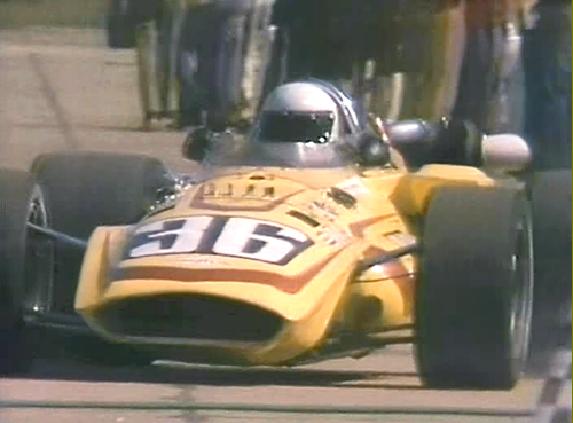
|
Tony pulls out of the pits to qualify his 1,000 horsepower Eagle. Wings were banned until the following year, so the car had virtually no aerodynamic downforce. |
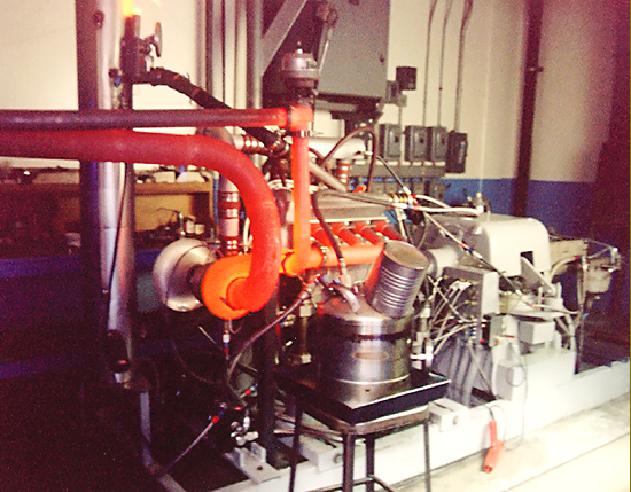
|
With heat like this, the Turbo Offy's power was limited mostly by its own water jacketing |
|
Tony Adamowicz, Gary Wheeler, Tony a2z, Tony Adamowics, a2zRacer, Gary Wheeler, Tony Adamowicz |
|
HOME |

|
DIRECTORY |

|
LINKS |

|
BACK |

|
NEXT PAGE |

|
PAGE: 1 2 3 4 5 6 7 8 9 10 11 12 13 14 15 16 17 18 19 20 21 22 23 24 25 26 27 28 29 30 31 32 33 34 35 36 37 38 39 40 41 42 43 44 45 46 47 48 49 50 51 52 53 54 55 56 57 58 59 60 61 62 63 64 65 66 67 68 69 70 71 72 73 74 75 76 77 78 79 80 81 82 83 84 85 86 87 88 89 90 91 92 93 94 95 96 97 98 99 100 |